Board analysis and power supply
The card assembled at Foxconn has the 12-layer backdrill board I described back in the spring of 2020. The type of power supply for the GA102-225 is again analogous to the other cards with the GA102. If we take a look at the top side of the board, we immediately recognize the division of the main power supply into two parts. NVDD (blue) stands for the conventional core voltage, i.e. what we like to call GPU voltage. And yet, this board is slightly different from the board of the GeForce RTX 3080, because NVIDIA has also drawn the right conclusions from the thermal problem areas.
Here there are now a total of 10 instead of nine individual phases for NVDD, provided by a monolith MP2888A on the rear (blue) or a pin-compatible equivalent. This is a digital PWM controller with VID interface, compatible with NVIDIA’s Open VReg specification. The MP2888A can generate up to 10 phases, so it is now also fully utilized here. The 10 phases are each implemented with still very sparsely documented Smart Power Stages (SPS) MP86957 from the same manufacturer, which also enable MOSFET DCR.
The assembly of the power supply MSVDD (green), which I had called “Gedönsspannung” and which stands for “Miscellaneous”, is similarly constructed. We still find a total of five (instead of six on the RTX 3080) individually controlled phases, which are generated by an MP2886B from Monolith (rear), i.e. the little brother of the MP2888A from before. The six PLCs again rely on the MP85957 from the same manufacturer. So in the end there are 15 phases just for the GPU and the different voltages to it. This should also make power gating in the GPU a bit easier, with AMD using a similar, albeit much smaller, offload with VDDCI. The voltage range of both ranges is between 0.7 and a maximum of 1.2 volts, whereby the maximum value can never be reached by the end user without special firmware and software.
The shift of the added control circuit for NVDD to the left also makes sense thermally, because one more phase not only takes into account the TBP in the power limit, which has increased by up to 30 watts, but it also reduces the power dissipation of each individual phase, because the switching frequency also seems to have been adjusted. If you add about 5 to 6 watts for the two additional memory modules, then NVDD will surely account for about 20 watts more, the rest of 4 to 5 watts is for MSVDD.
For the memory, NVIDIA uses three phases generated by an even more stripped down MP2884B from Monolith, with the PLCs also being of the same type as the previous ones. However, the PWM controller is located on the front The PLC of the PCI Express voltage PEXVDD and the 1.8 Volt are also located on the back, the corresponding coils on the front. There is also a 5V conditioning at the bottom right. We also see several thermal pads here on the back, especially a large one on the caps of NVDD, which shows that NVIDIA must have read the pad mod and my comments about the hotspot on the board quite carefully.
Three coils with 1 µF each are used for input smoothing. Behind these coils a shunt is connected, the voltage drop of which is used to measure the flowing currents. However, since the firmware can also evaluate the MOSFET DCR of the PLC, shunt mods are no longer easily possible. To the right we see Monolith’s large PWM controller MP2880A for NVDD on the back.
The two following pictures show representative for all PLCs one of the power stages of the type MP86957, which is used for all three large supply circuits, as well as exemplarily one of the many 220 mH coils. The MP2880A for MSVDD I give myself here times as a picture, because it looks not much different than the MP2884B of the memory.
We see below the MP2884B for the memory and one of Micron’s memory modules. The total of 12 1 GB modules of the GDDR6X memory come from Micron. The memory runs at only 19 Gb/s, when it should be capable of 21 Gb/s. To what extent NVIDIA wanted to prevent thermal problems can of course only be speculated.
Radiator and disassembly
The disassembly of the cooler is quite tricky, here I like to refer to the appropriate video, which I have already uploaded bilingual for the GeForce RTX 3080 and which applies analogously 1:1 for the RTX 3080 Ti. The body is mostly made of light metal with a pretty clever finish, which also made me initially assume a plastic coated with metal powder when unboxing due to the “GEFORCE RTX” lettering incorporated. The actual cooler is multi-part and consists of an efficient, nickel-plated heatsink on the back of which four flattened heatpipes were soldered, which then extend longitudinally to the end of the card.
Above the heatsink and the open construction sit a total of two PWM-controlled 8.5 cm fans with a very interesting rotor blade geometry, almost reminiscent of the design of radial fans. Well, almost. But also the maximum speed of the two separately controlled fans (front up to 3800 rpm, rear up to 3400 rpm) isn’t exactly an expression of noble restraint. Let’s hope it stays quieter here than the card could if it had to.
The backplate is also made of light metal, which has been coated matt black on the outside. The manufacturer thermally connects only the voltage converters and the PWM controllers to the backplate. The areas under the memory and the BGA remain without cooling at the rear.
There has already been a lot of speculation about the principle with the different intake and exhaust directions, so I won’t repeat myself, but just try the foil again. We will see the test in the closed case anyway.
- 1 - Introduction, Unboxing and Test System
- 2 - Teardown, PCB Analysis and Cooling System
- 3 - Performance: WQHD and Full-HD plus DXR
- 4 - Performance: Ultra-HD with and without DLSS / DXR
- 5 - FPS, Percentiles, Frame Time & Variances
- 6 - Frame Times vs. Power Draw
- 7 - Power Consumption: GPU and CPU in all Games
- 8 - Power Consumption: Effiziency in Detail
- 9 - Power Consumption: Overview, Summary and measured Details
- 10 - Standards (PCI SIG), Transients and PSU Recommendation
- 11 - Temperatures, Boost Clock Rate and Thermal Imaging
- 12 - Fan Speed, Noise and Audio-Sample
- 13 - Summary and Conclusion















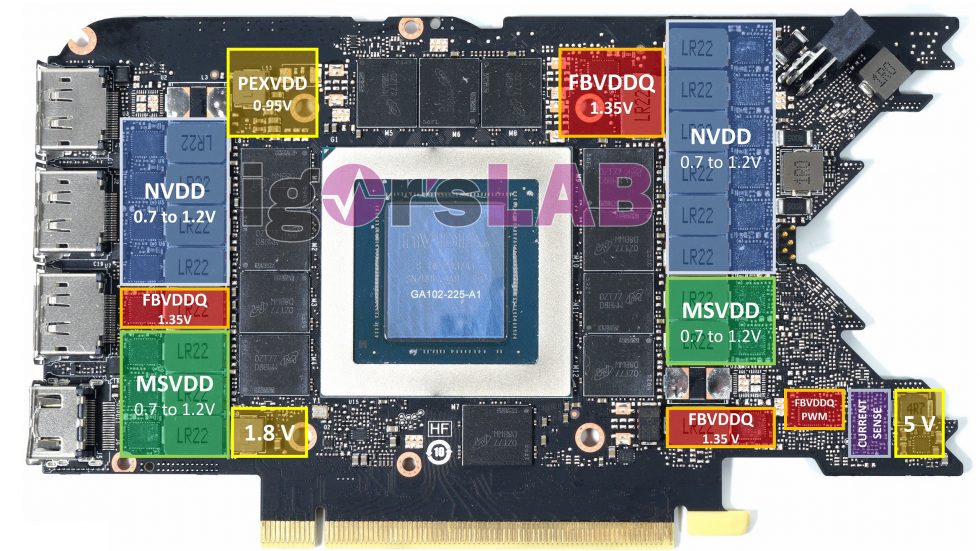
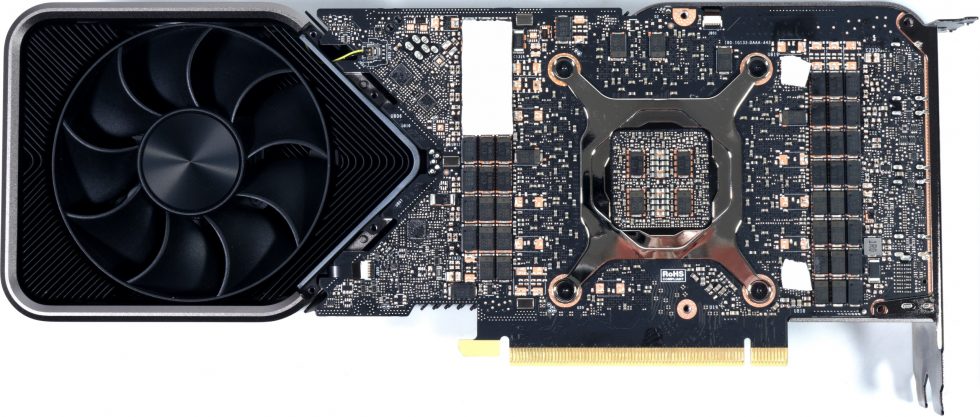
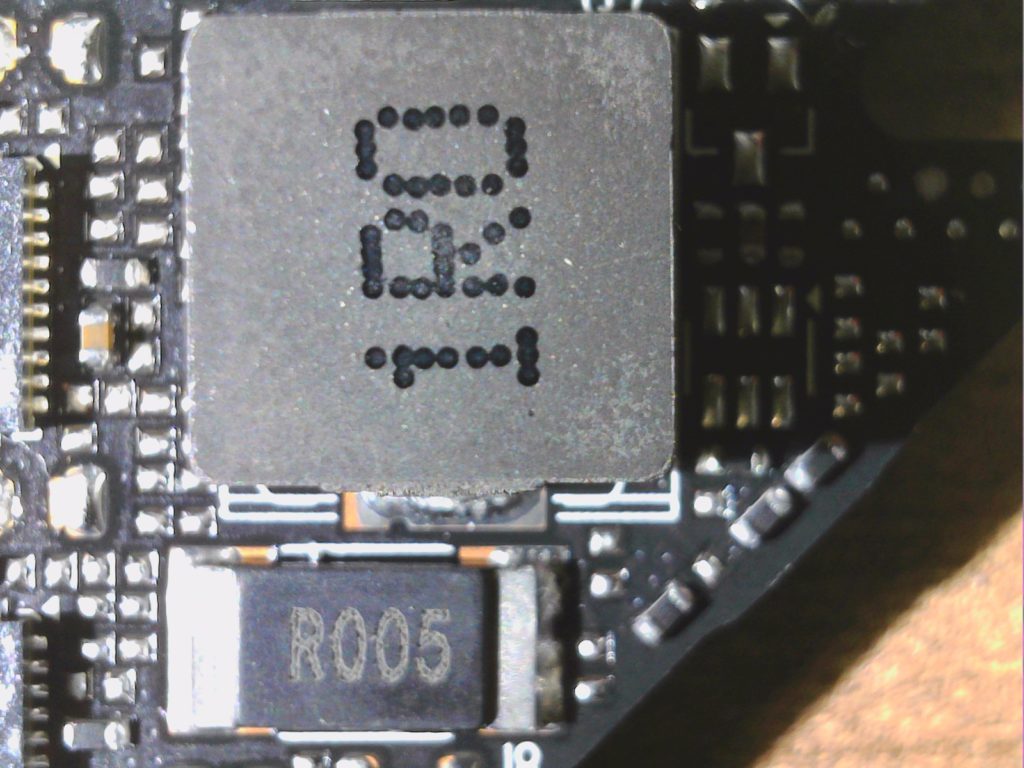
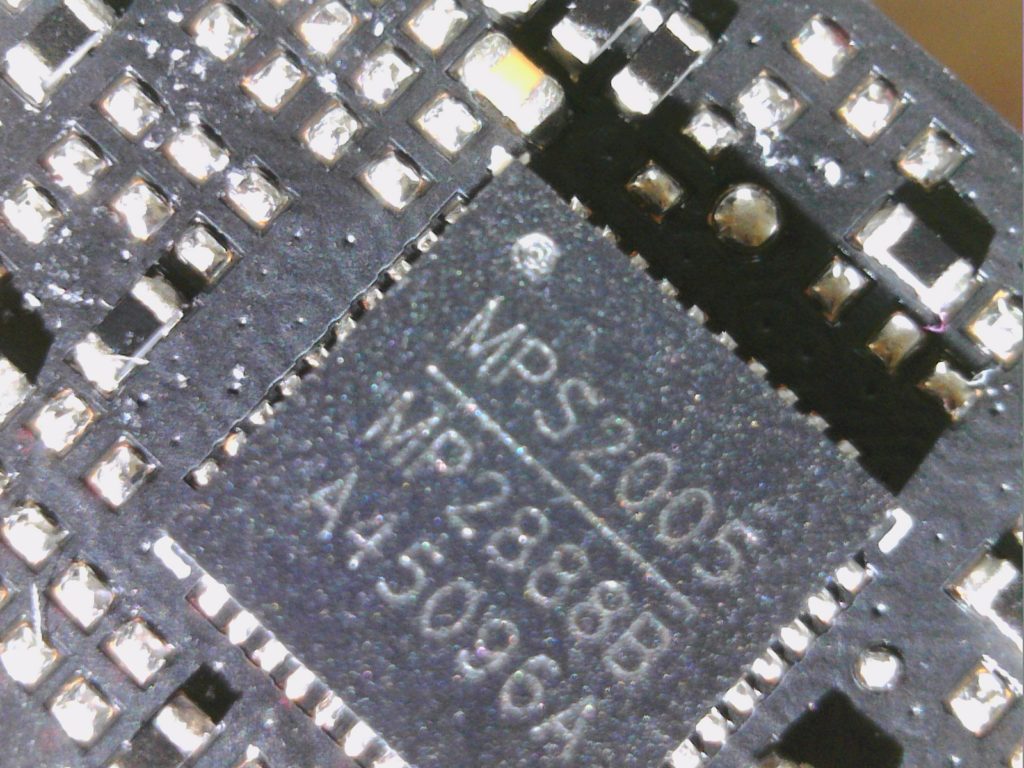
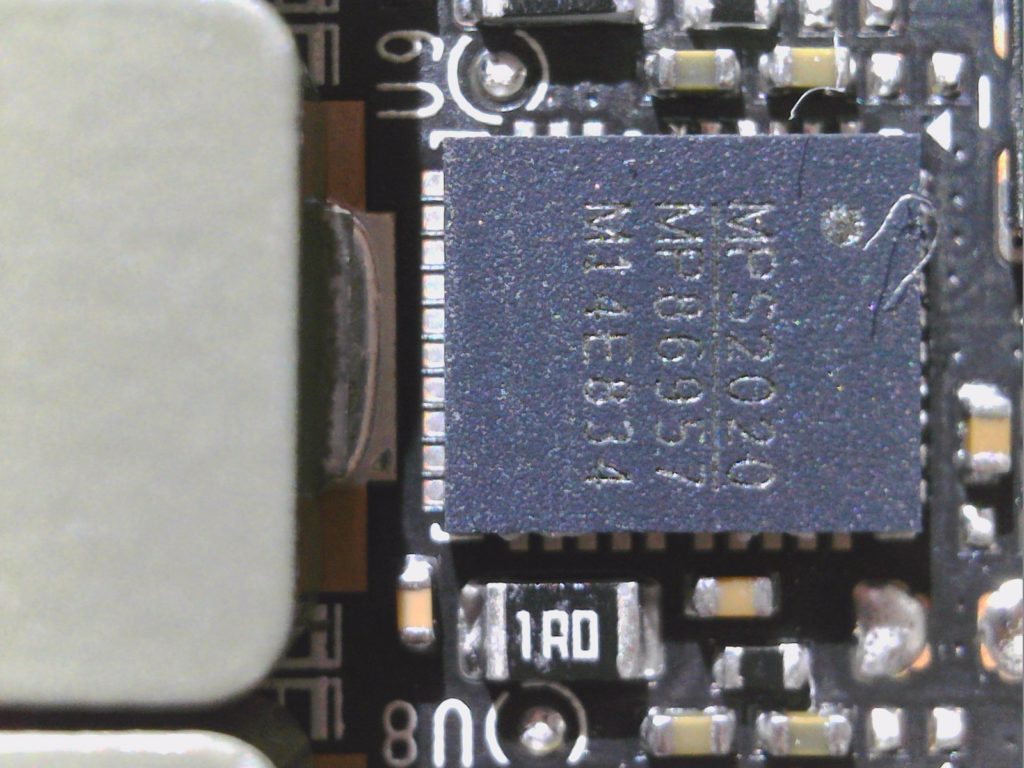
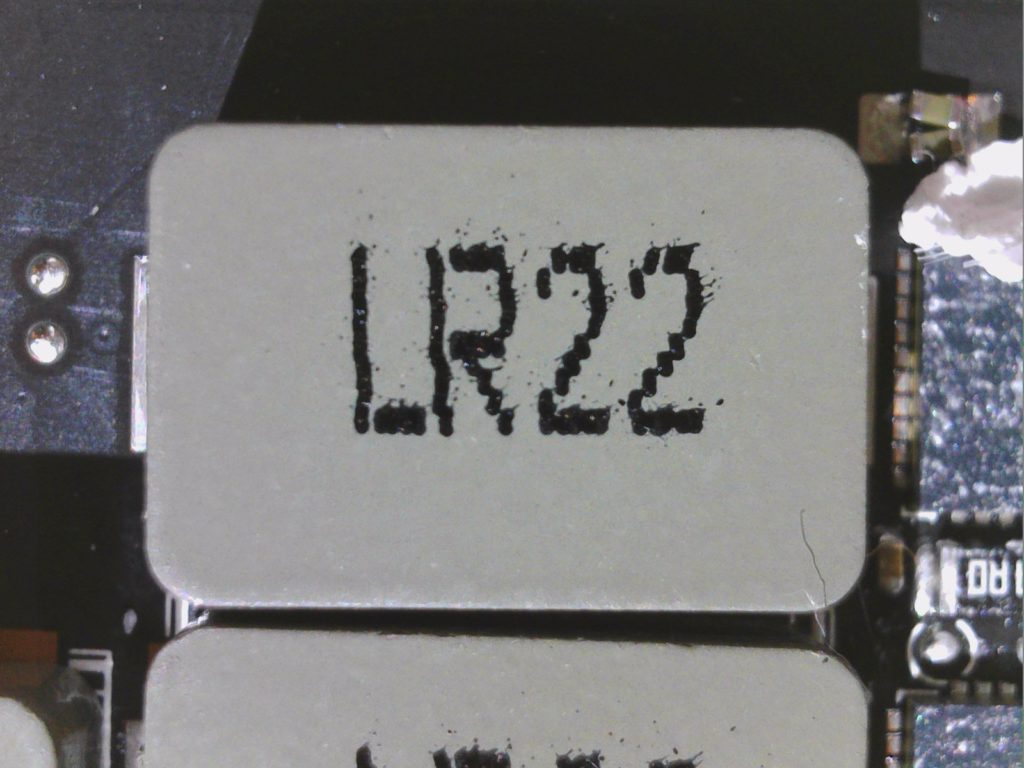
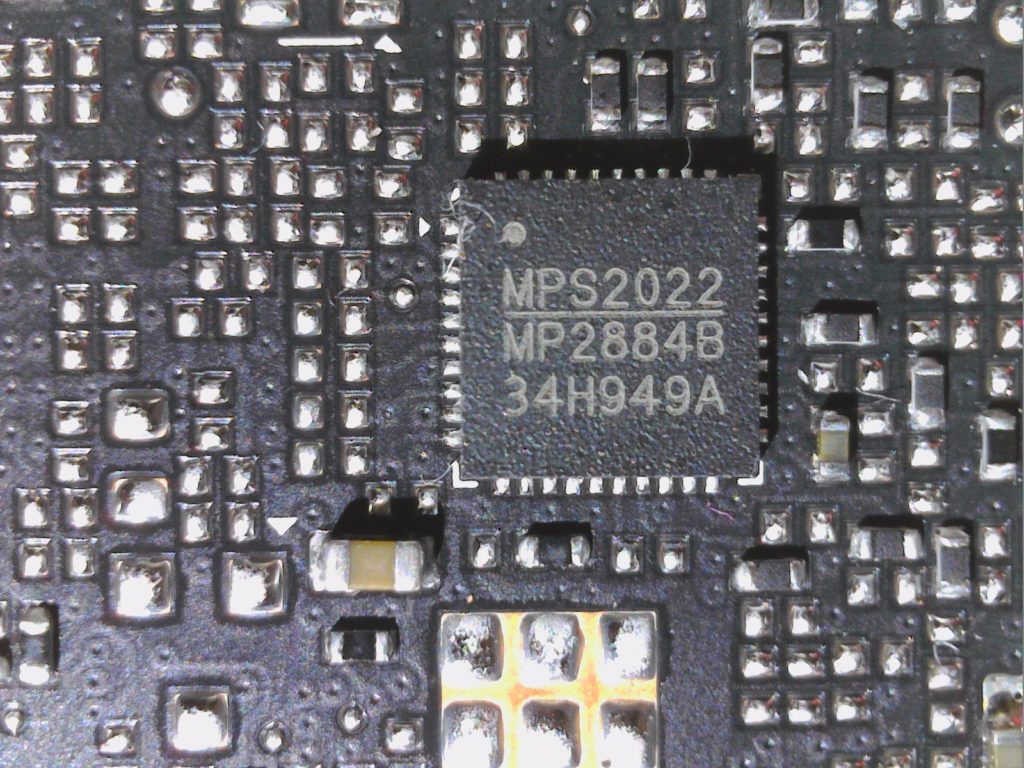
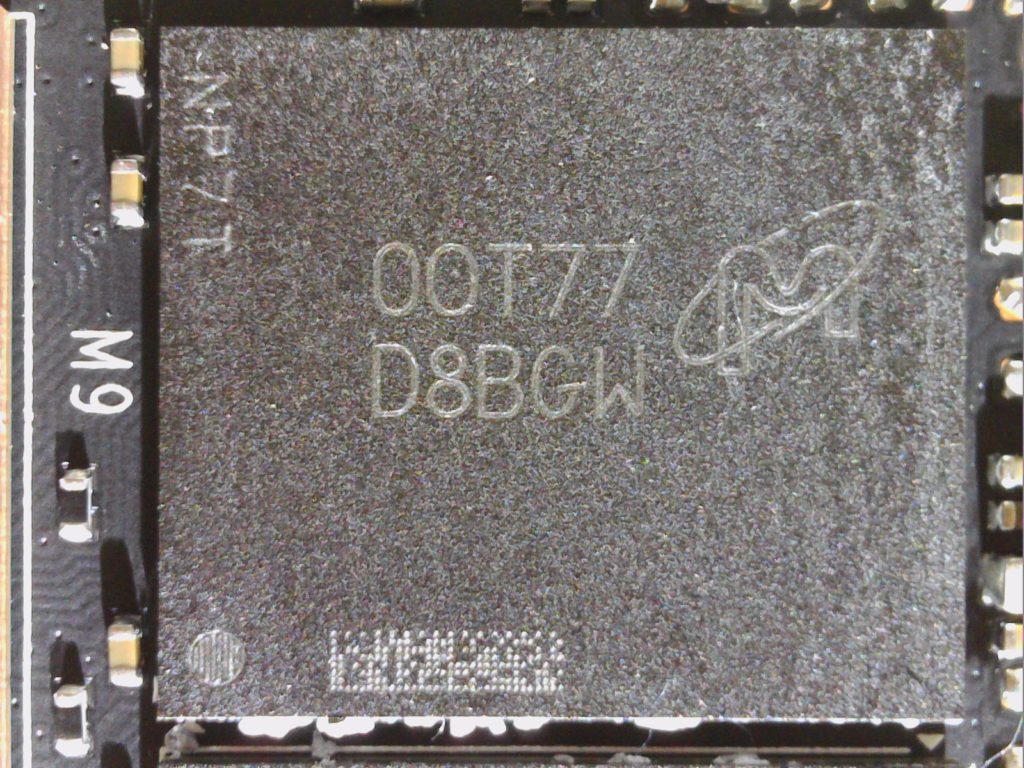
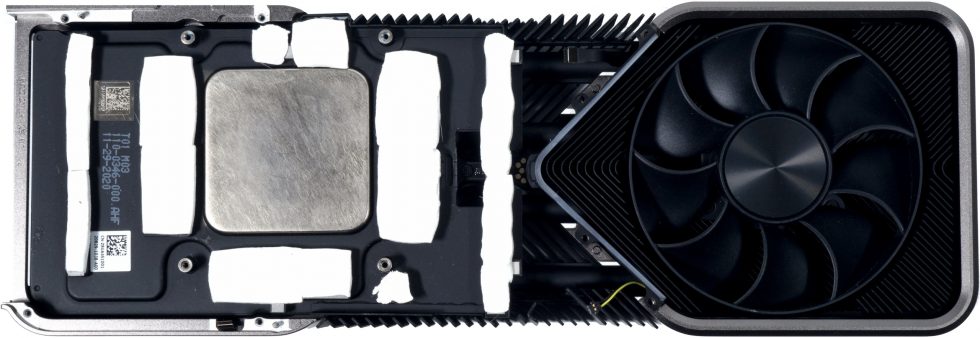
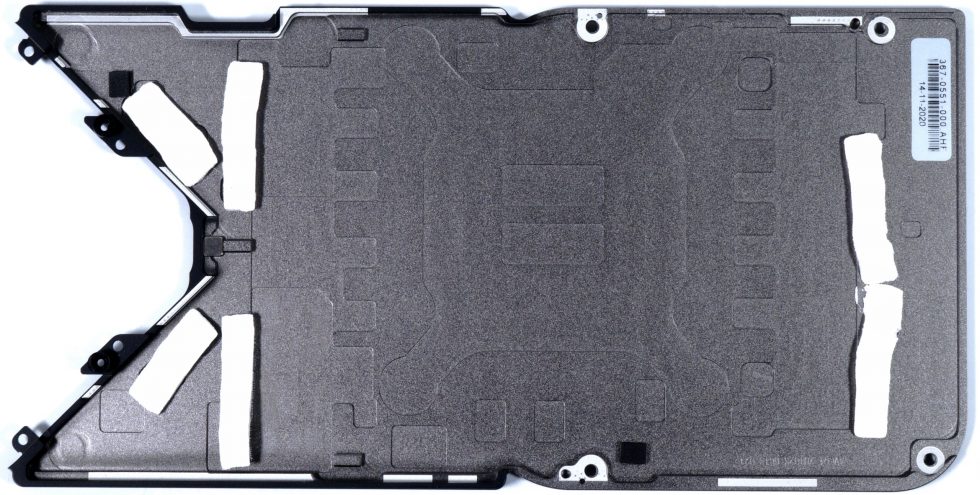
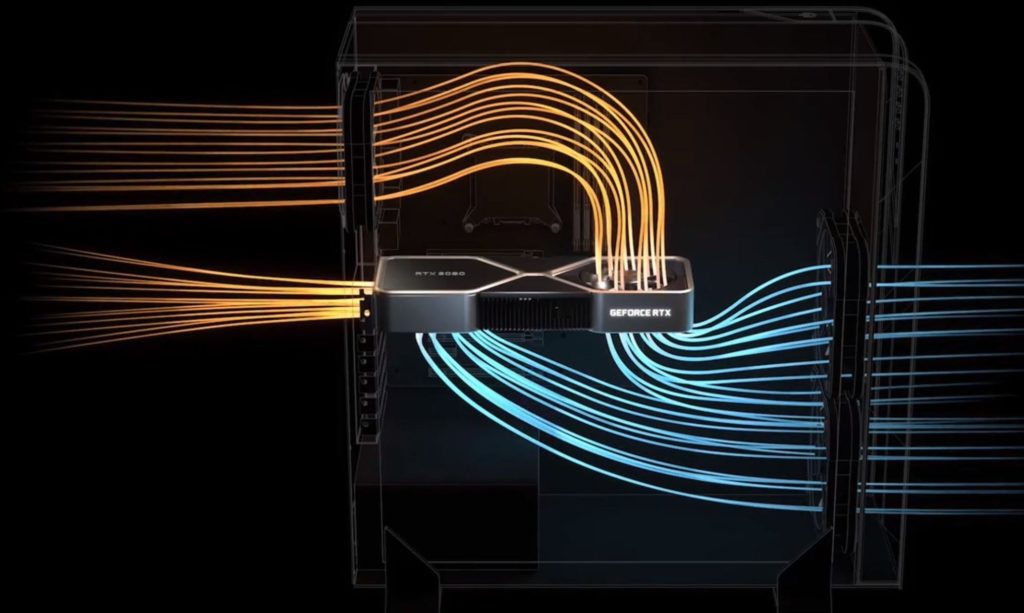

















Kommentieren